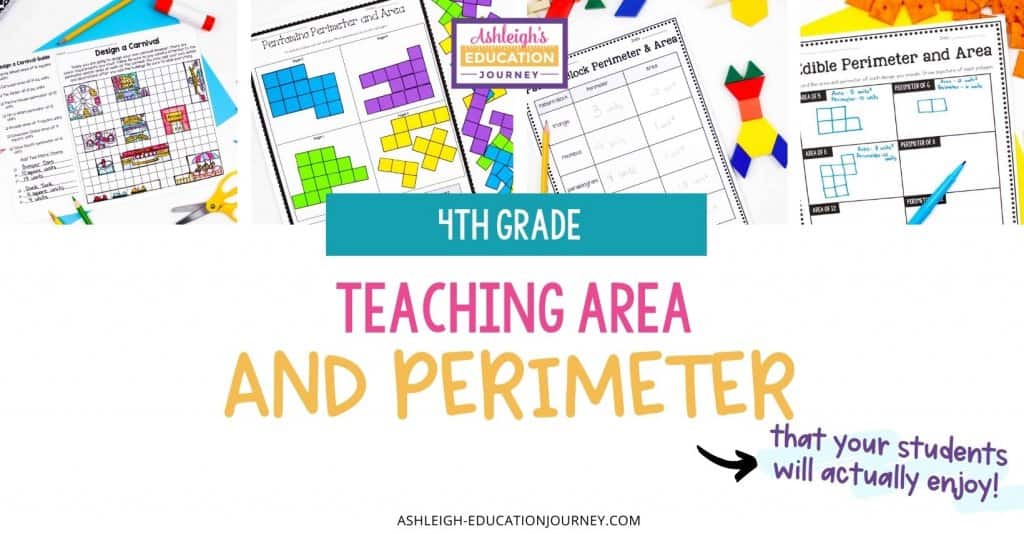
I love teaching area and perimeter activities and lessons. There are so many ways to make the lessons engaging and relevant to students.
This post if full of ideas for teaching area and perimeter activities that students will LOVE. These lessons were created for my fourth grade class but can be adapted to any grade level. If you want to see the area and perimeter post with lessons I used when I was teaching third grade, check out this post. The lessons below are a small part of my 4th Grade Measurement Unit.
Pattern Block Perimeter and Area
Even though area and perimeter is introduced in third grade, most students need a review of the concepts through hands-on activities. In the first lesson(s), it is not necessary to explain how to add the sides to find the perimeter or multiply the sides to find the area. Instead, make sure students understand the general concept of perimeter and area. In this pattern block activity, students use the side of the square as one unit. Using the square, they find the area and perimeter of each of the pattern blocks.
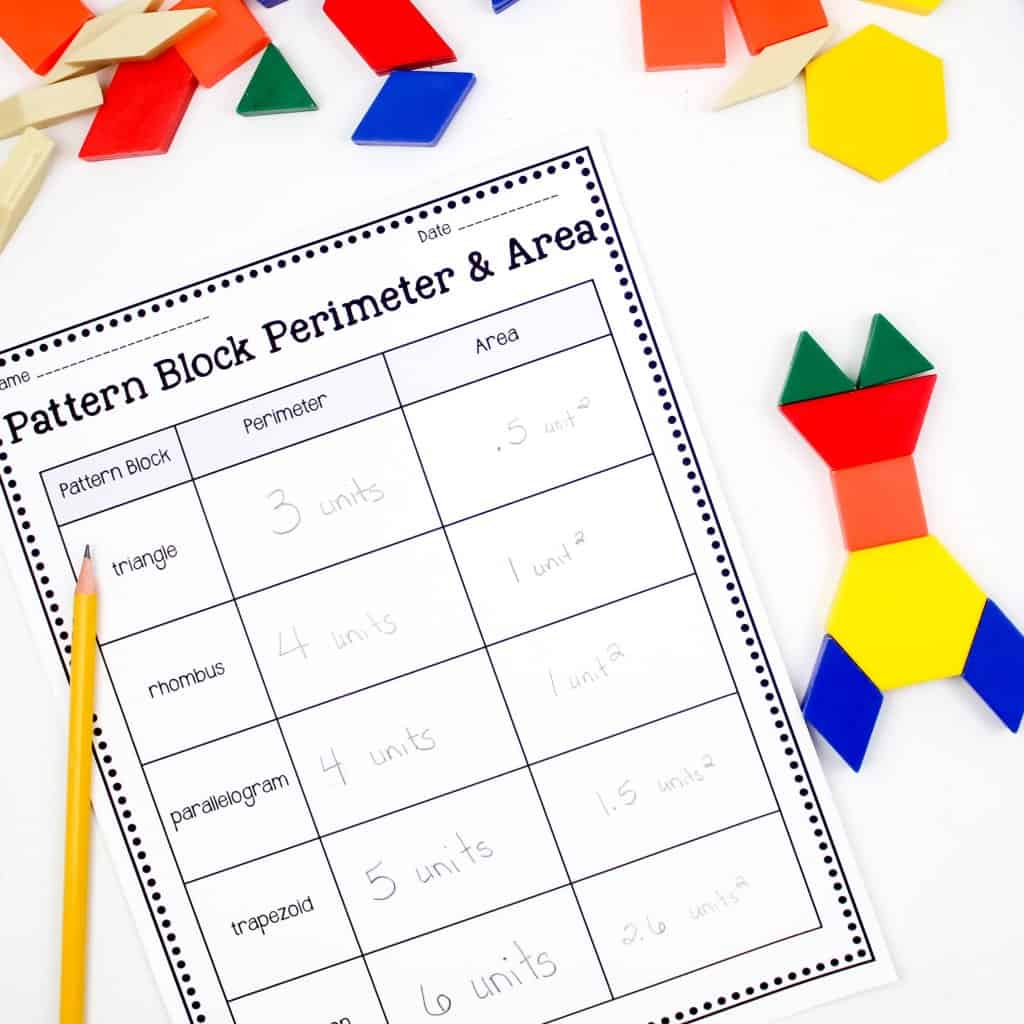
Edible Perimeter and Area
Food always brings in an extra element of fun, especially in math! In this area and perimeter activity students are given a fixed area of a fixed perimeter and use square crackers to build polygons with those areas or perimeters. If you’re not allowed to use food, you can use square tiles. Even though this is fun for students, it is quite challenging, and it allows students to see how there are many different ways to build a set number of square units.
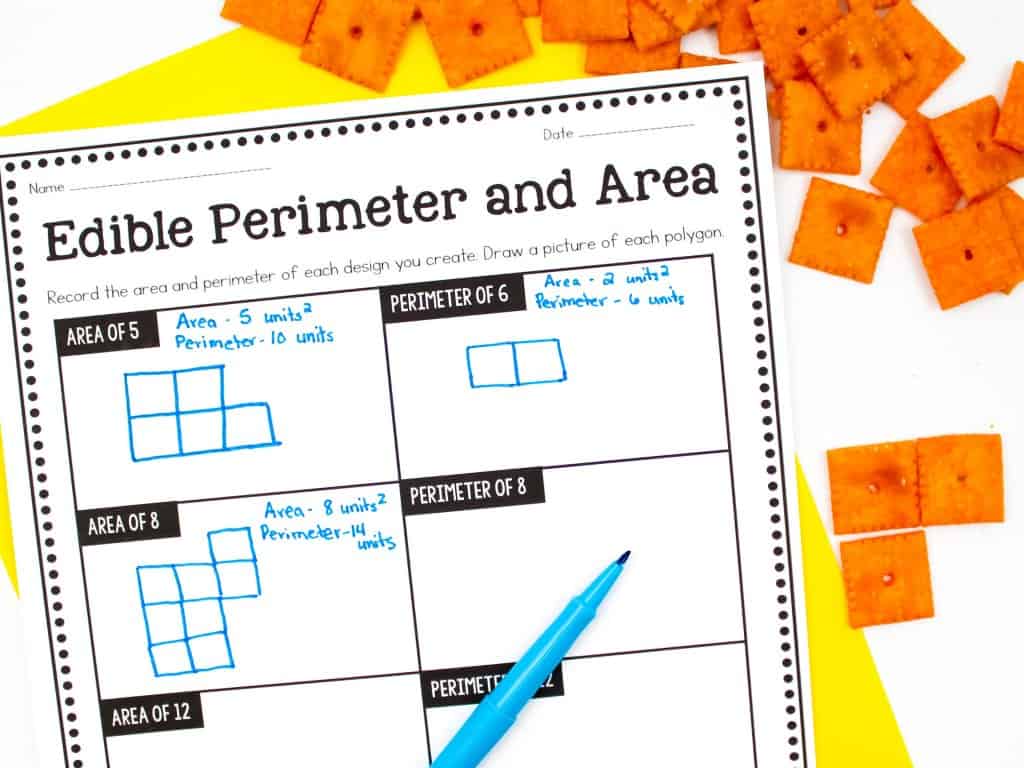
Area and Perimeter Carnival
After the hands-on lessons that incorporate some pictorial representations, I move to a lesson that is primarily pictorial. Students use grid paper with an included set of directions to build a carnival with fixed areas and perimeters. I have students focus on the math portion first and use their extra time to color or decorate the rides and booths in the carnival. It’s important to let students know that the math is the priority of the lesson.
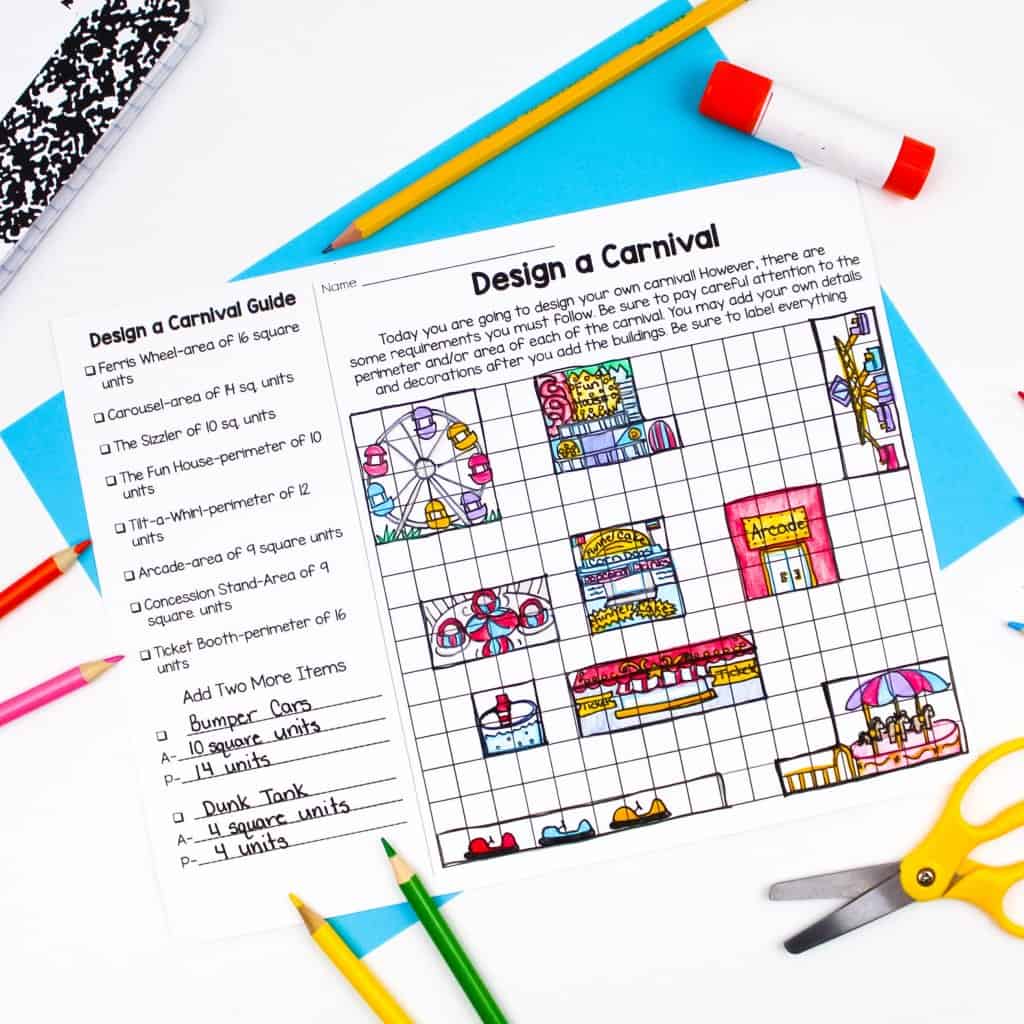
Pentomino Area and Perimeter
This is another highly pictorial lesson. In each square, students combine three pentomino pieces to form a polygon. Make sure students line the squares up and don’t try to create diagonal designs. Then, students find the area and perimeter of each polygon. This leads to great conversations about how the areas remain fairly constant but the perimeters change significantly.
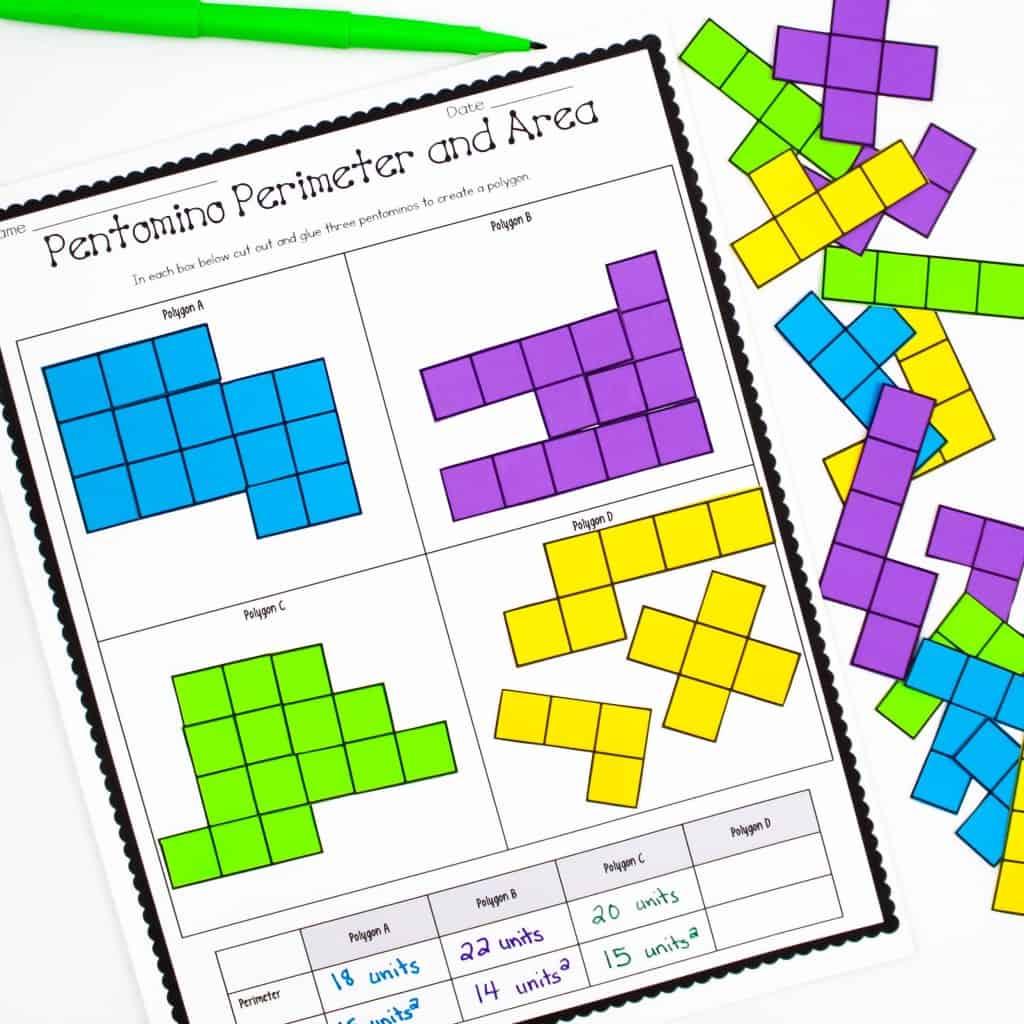
Ordering Rectangles
If you feel that students need additional work with pictorial models, you can have them complete this ordering rectangles area and perimeter activity. Students use grid paper to draw all the rectangles they can with a given perimeter (you can decide or let the class decide). After they build the rectangles, they find the area of each rectangle and write the area inside the rectangle. You can have students cut out the rectangles and glue them in order from smallest area to largest area which helps students visualize the differences in measurements.
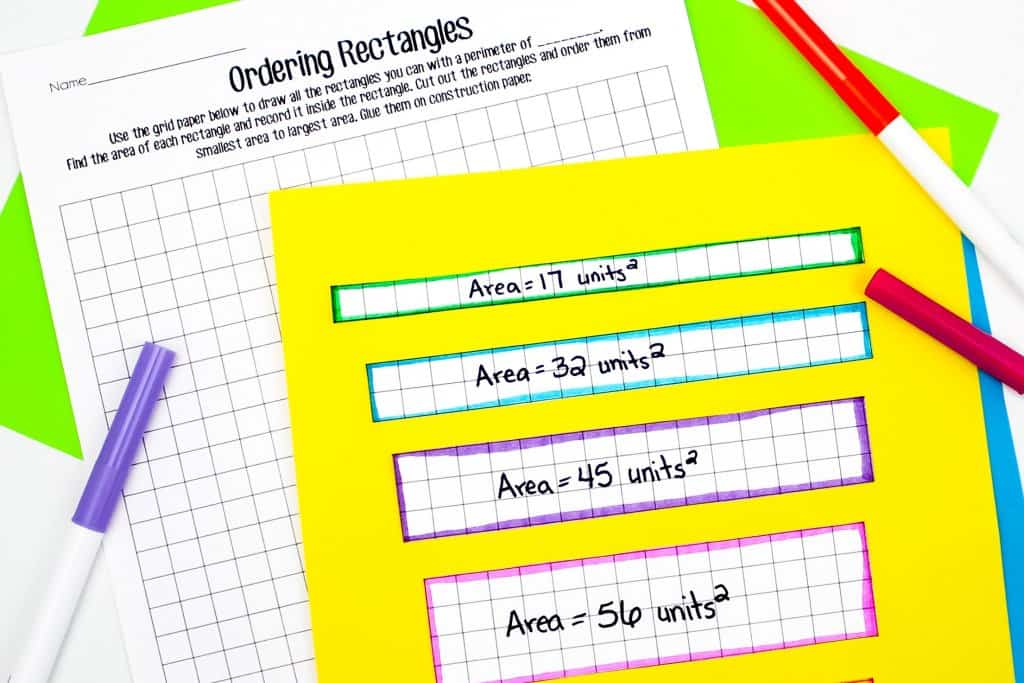
Fixed Area and Perimeter
When you feel that students are ready to move toward abstract thinking, this fixed area and perimeter is a good starting area and perimeter activity. Students draw and label all possible rectangles with a perimeter of 24 units (or different set perimeter). Then, they draw and label all possible rectangles with an area of 24 units.
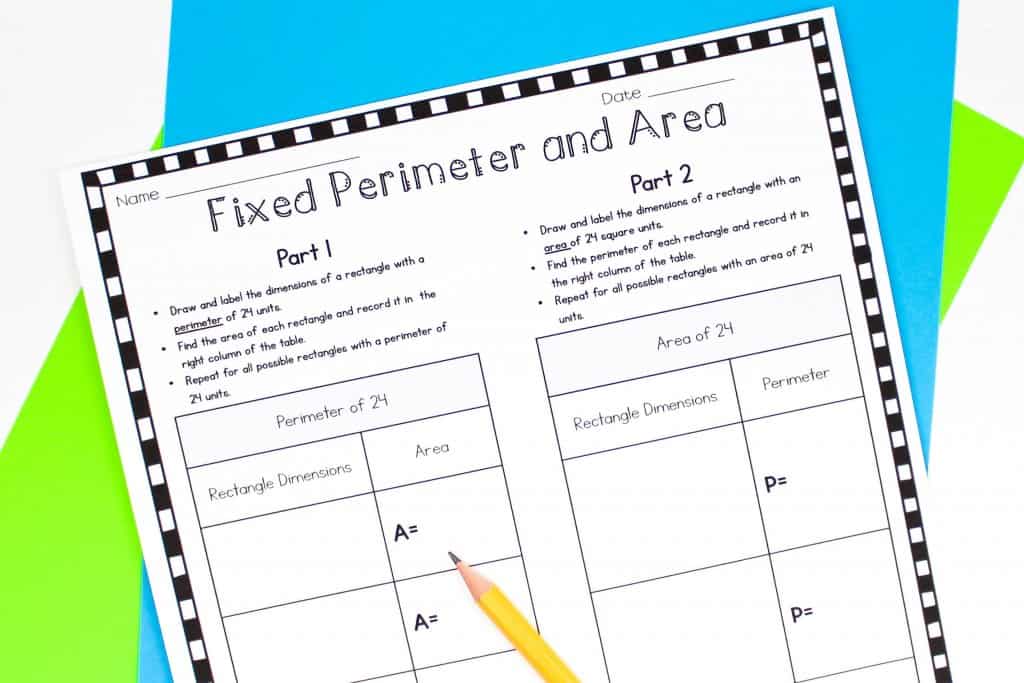
Construction Decisions
After a time working with abstract perimeter and area, I like to step up the problem solving into more complex problems. This is where students must draw from their conceptual understanding and problem solving experiences to find solutions.
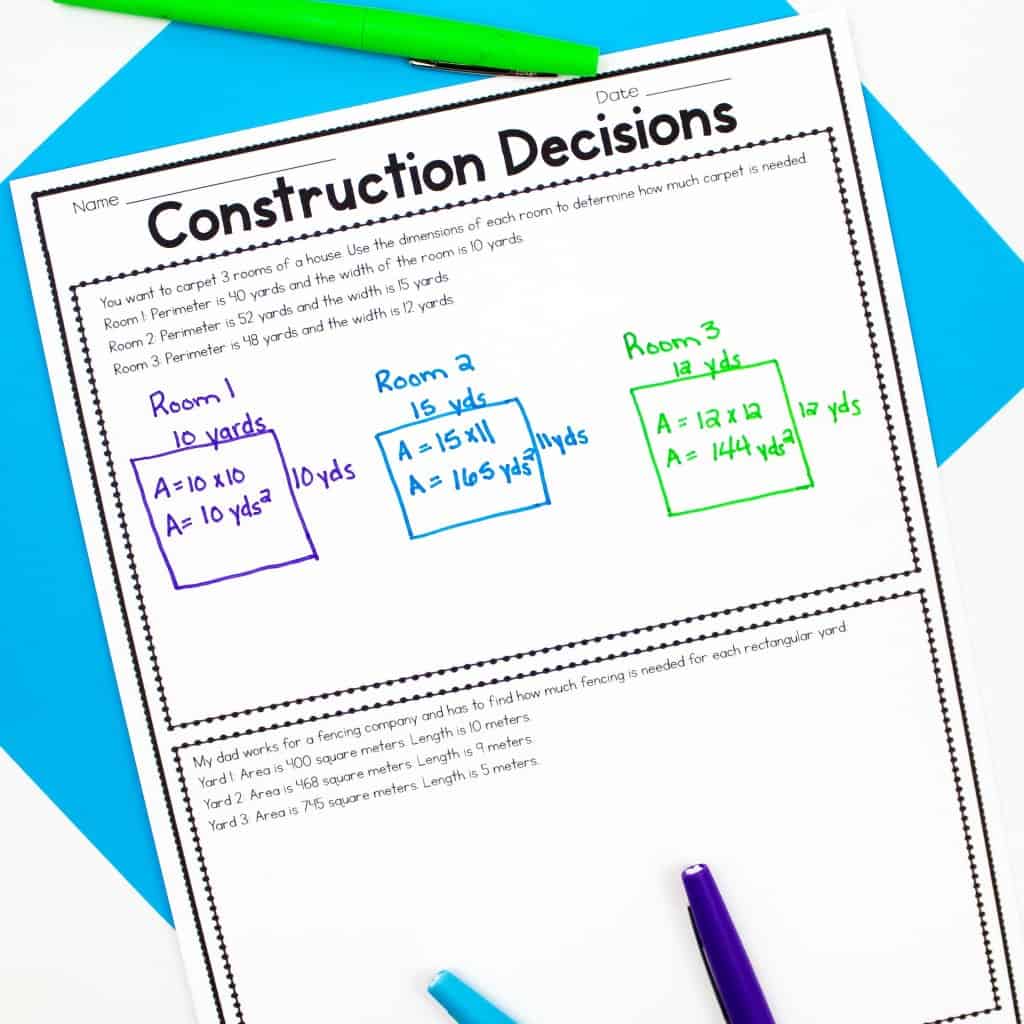
Area and Perimeter Activities – Problem Solving
Through problem solving area and perimeter activities, I also teach students how area is additive. This means you can add sections together to find the total area, which is typically not too challenging for students. However, it also means students can subtract to find area, which is often a surprise. You can download three FREE problem solving activities here!
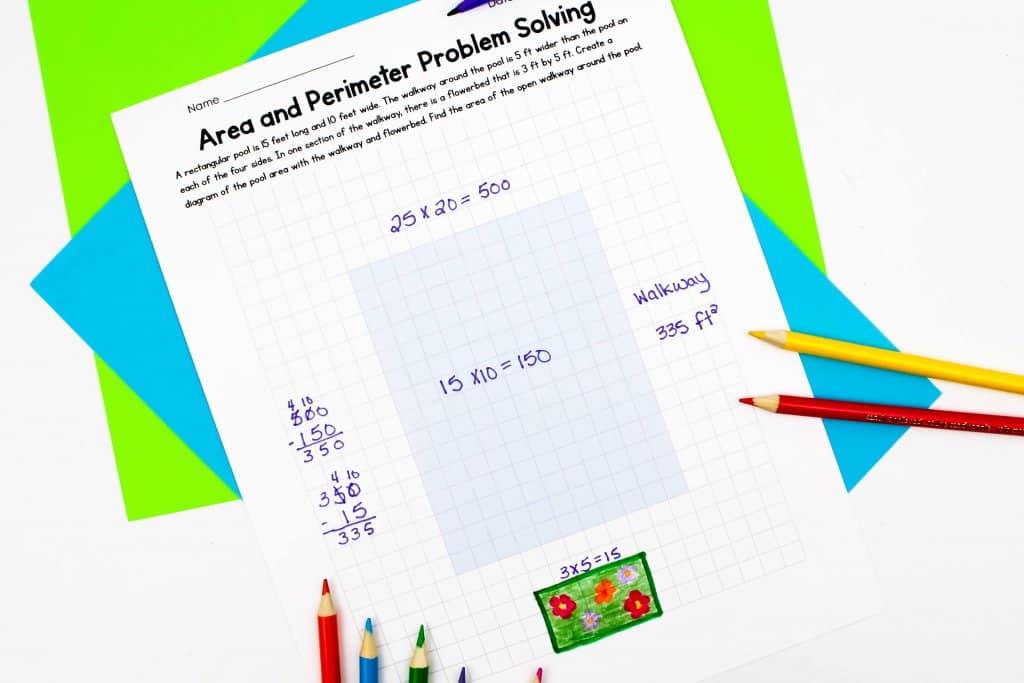
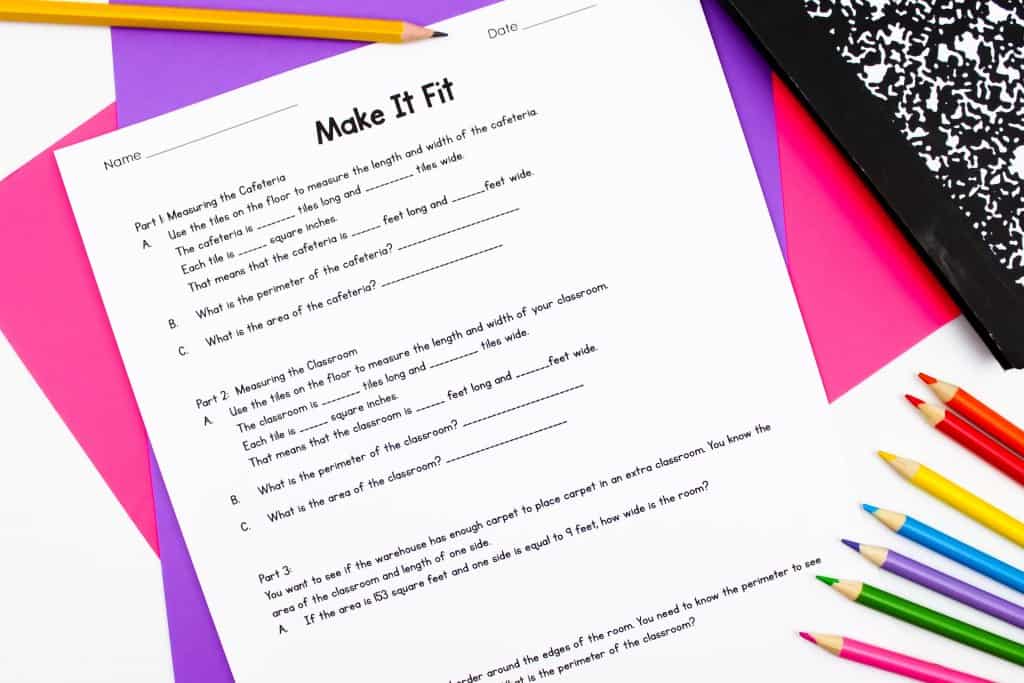
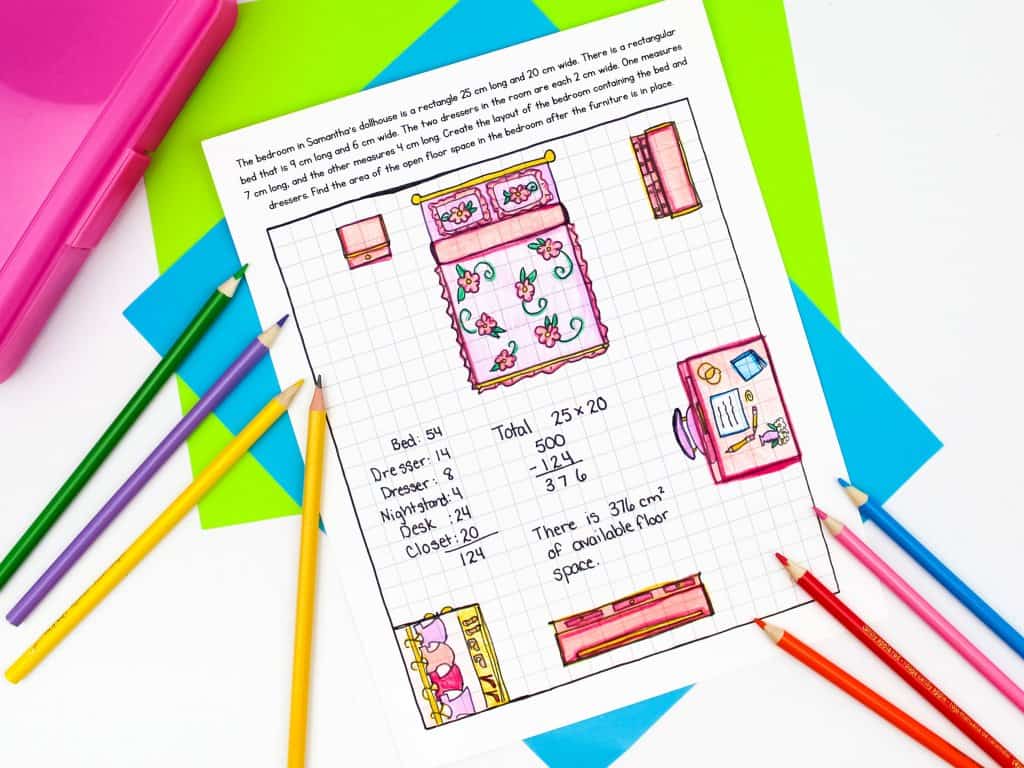
Integrating Art
I love to integrate art whenever possible, and this was a lot of fun. I used it as an early finisher activity, so it wasn’t an actual lesson. If students finished their task early, they could work on their name. Students wrote their name in block letters on grid paper (we tape it together to make a long sheet of paper). Then the partitioned each letter of their name into rectangles and found the area for each section of each letter. I had students color-code each section and the corresponding equation.
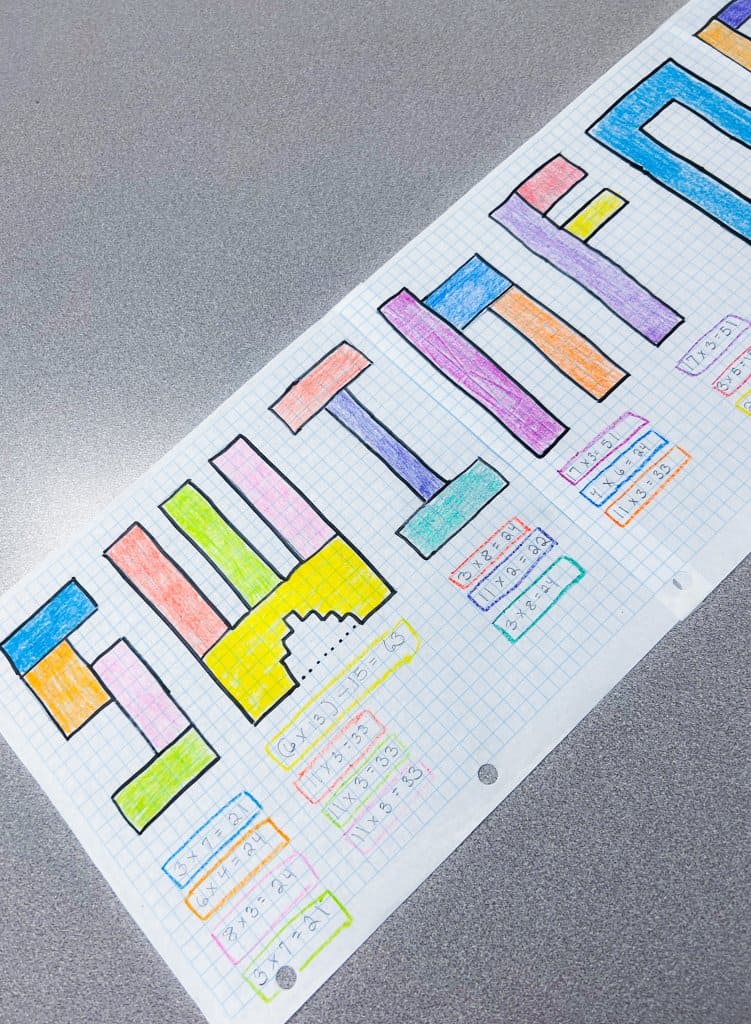
I hope you were able to find exciting area and perimeter activities that your students will love!



Hello! I cannot seem to find the link for the Design a Carnival activity. Could you please help?
The second link on the post will take you to it!
Hi,
I love your materials! Can you update the pool problem-solving page by making the last column of the pool white for the walkway? Right now my copy shows the pool as 11 ft wide and the walkway as 4 ft on the right. Thank you!